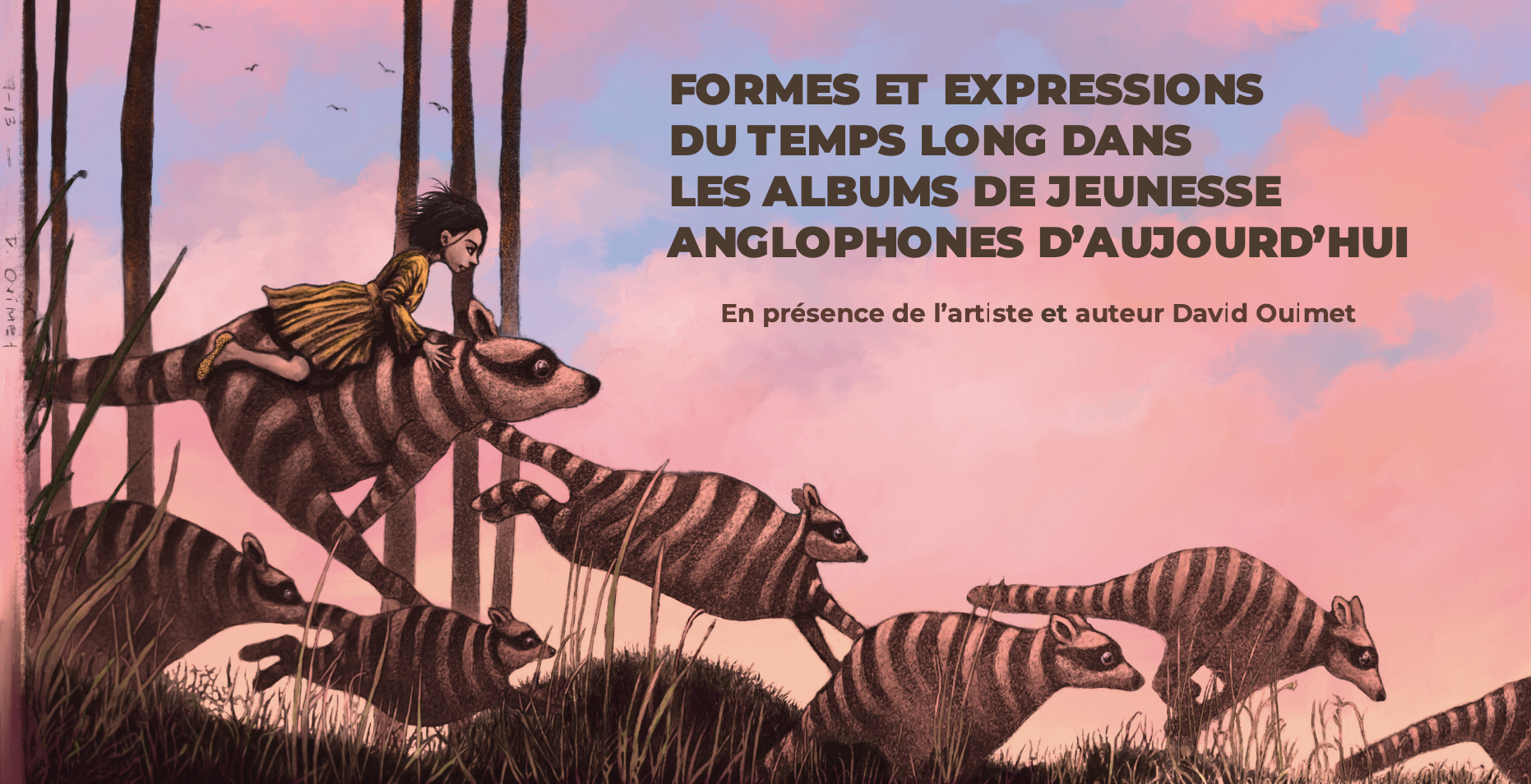
- Cet évènement est passé.

« Formes et expressions du temps long dans les albums de littérature de jeunesse anglophone aujourd’hui ».
29 novembre 2023 · 9h00 – 30 novembre 2023 · 14h00
Organisateur :
Véronique Alexandre
Organisateur :
Véronique Alexandre
Programme du colloque
As works of artistic value and commercial objects, children’s picturebooks are designed, produced, purchased, given as presents, borrowed from libraries, lent to friends and/or treasured by collectors. They are artefacts that primarily lend themselves to shared read-alouds. They can be new discoveries, but they can also be old friends as they are read and read again. Picturebooks are also felt and handled by curious hands as their material nature suggests they should (Van der Linden, 2006 ; Ouvrard, 2022).
In some cases, picturebooks are textless. In fact, a picturebook owes its identity to the prominence of pictures in relation to text (Mickenberg & Vallone, 2011) and as underlined by critics and philosophers time is necessary to become aware of the details of a picture or a painting. Browne (2011) considers that an image is a riddle requiring and stimulating observation skills, and Molly Bang (2016) unveils some of the visual stratagems used by artists to produce pictures that are both dramatic and full of subtleties. Children’s books, as specialists in the field (Prince, 2021 ; Mickenberg & Vallone, 2011) remind us, are designed to instruct and entertain. They convey values (subject to historical change but some of them unchanging), ways of relating to and experiencing the outside world as well as ways of perceiving other human beings. Human experience is bound to time – chronological, linear time, cyclical time, layered time or spots of time that keep on resonating. How are children made to feel the different rhythms of time in picturebooks?
The aim of this conference is to reflect on and discuss the role of SLOW TIME in today’s picturebooks published in English (from 2000). SLOW TIME is the opposite of cut-up time, or time divided into small units for the purpose of carrying out numerous tasks, i.e. time spent struggling with time (Chalanset & Danziger, 1994). There might be several ways of dealing with the topic: slow time might be a theme in the narrative (cf. generations, seasonal change, slow motion, stillness of all kinds…). Slow time can be the time of the artist crafting the text and/or the images. It might be that slow time is the implied rule when reading a picturebook to or with children. If so, how can a slow read involving the observation of pictures as well as the unfolding of a conversation be understood? Lastly how do picturebooks, a combination of dense often elusive text and subtle pictures affect adults (parents, librarians, educationalists) when they plunge anew into the world of childhood?

